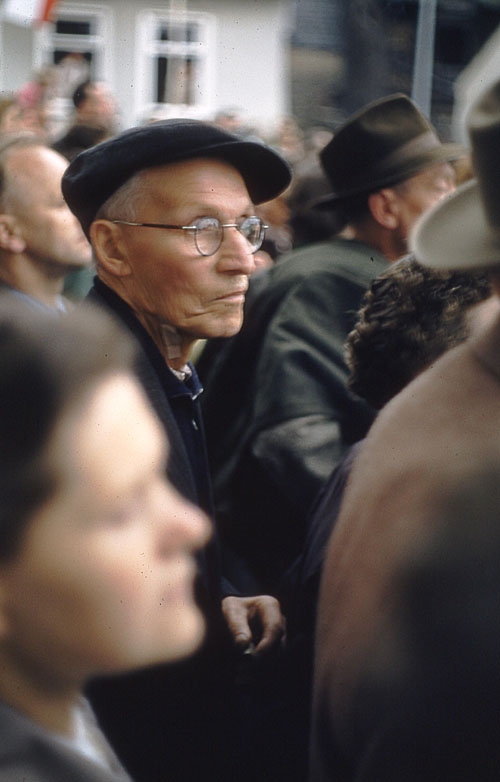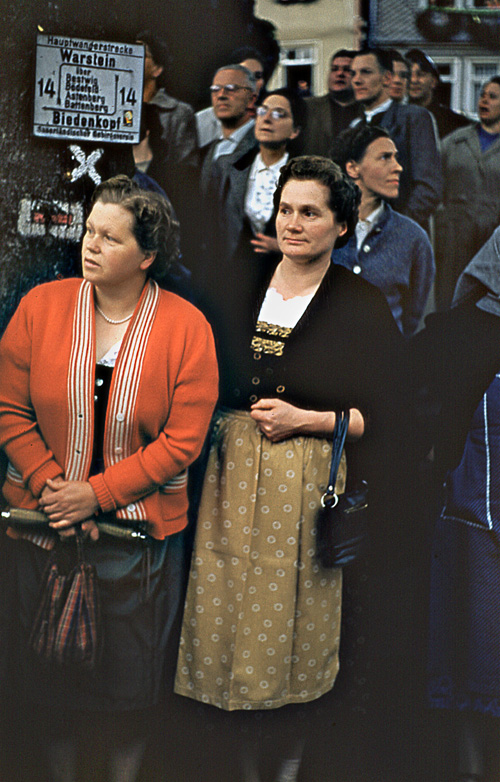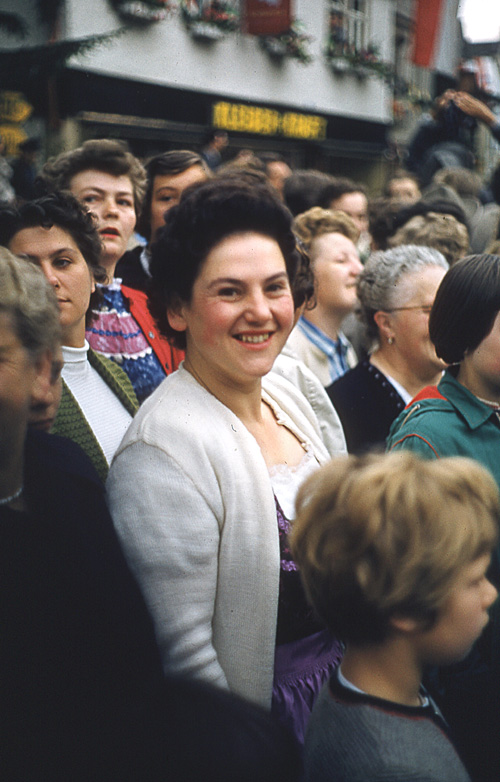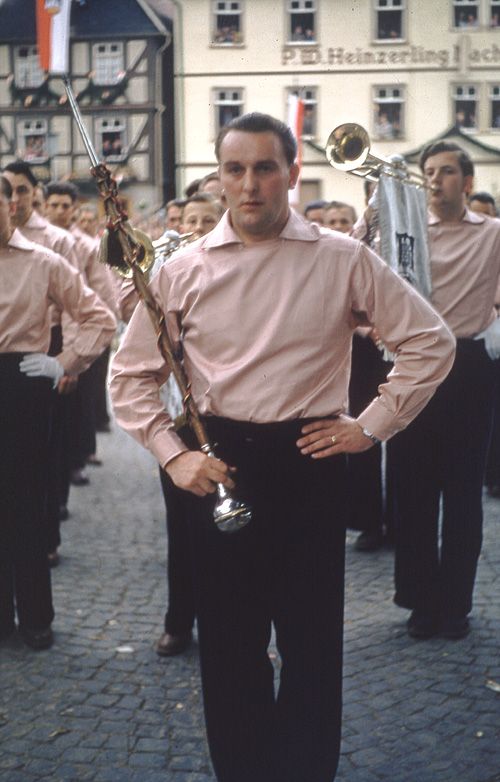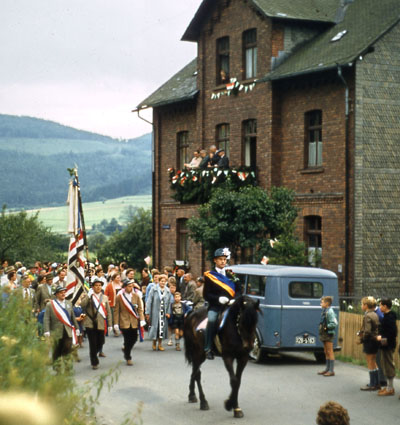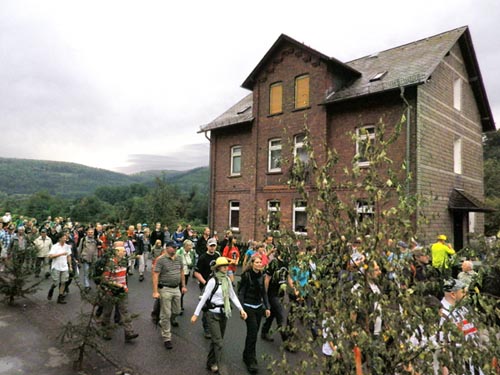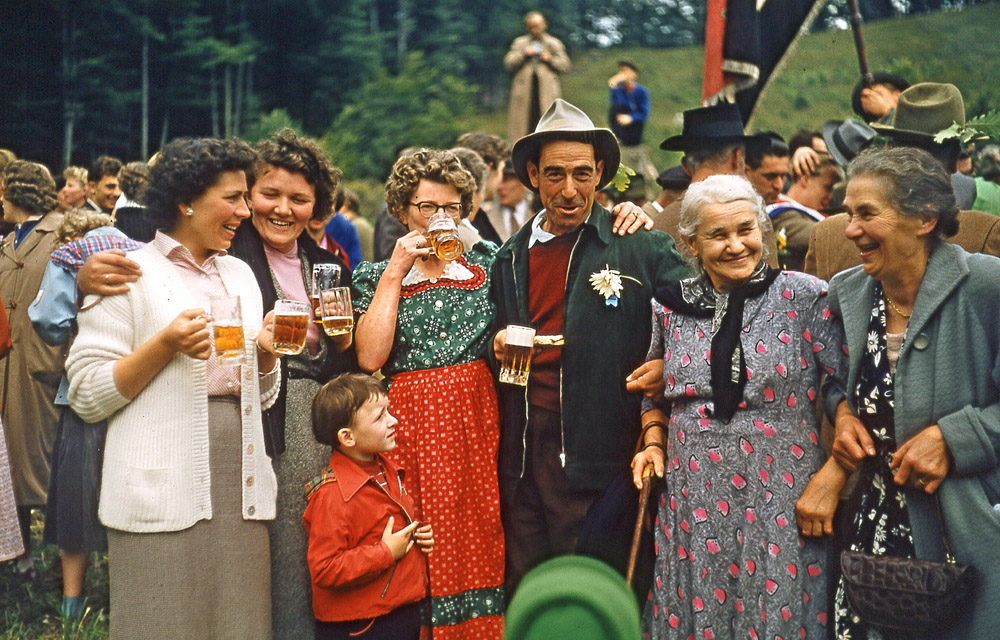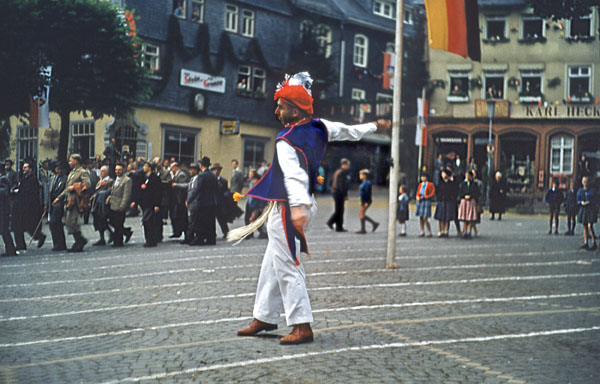
Wettlaufer am Marktplatz, Day 1 -- click to enlarge.
Hermann Wickenhöfer (above) and Theo Ochs were the
Wettläufer,
and Ernst Hartmann the Mohr for Biedenkopf's "Grenzgang 1956".
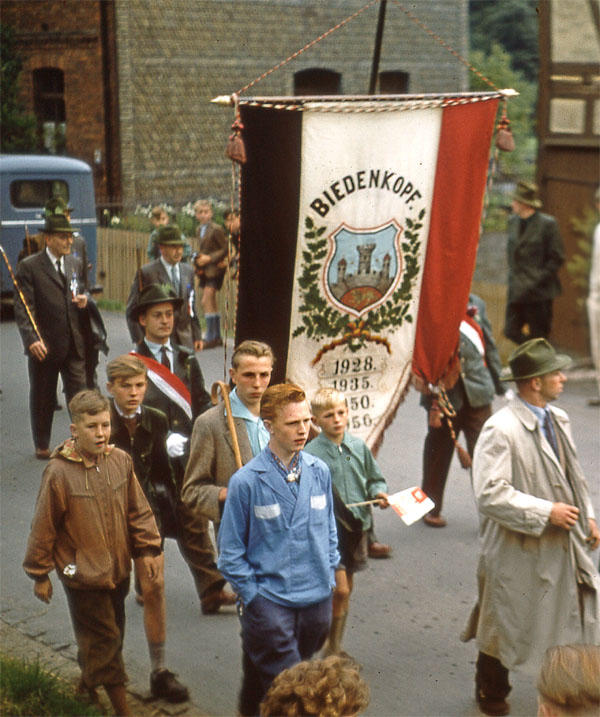
Marching out of town on Grenzgang Day 1 in 1956.
Click for full view.
Click either image for full view.
I do not know the story of this sad house, stripped of its balcony
(right, 2012) and all the people who lived there and decorated it in
1956 (left). Homes can stand vacant in Biedenkopf when no surviving
family members
live in the town anymore. If the home falls into disrepair and
reaches the point where no one could live there even if they and the
owners could arrange it, then the town faces a problem that is
almost insoluble. At least one historic structure in the Altstadt
is caught in such a dilemma.
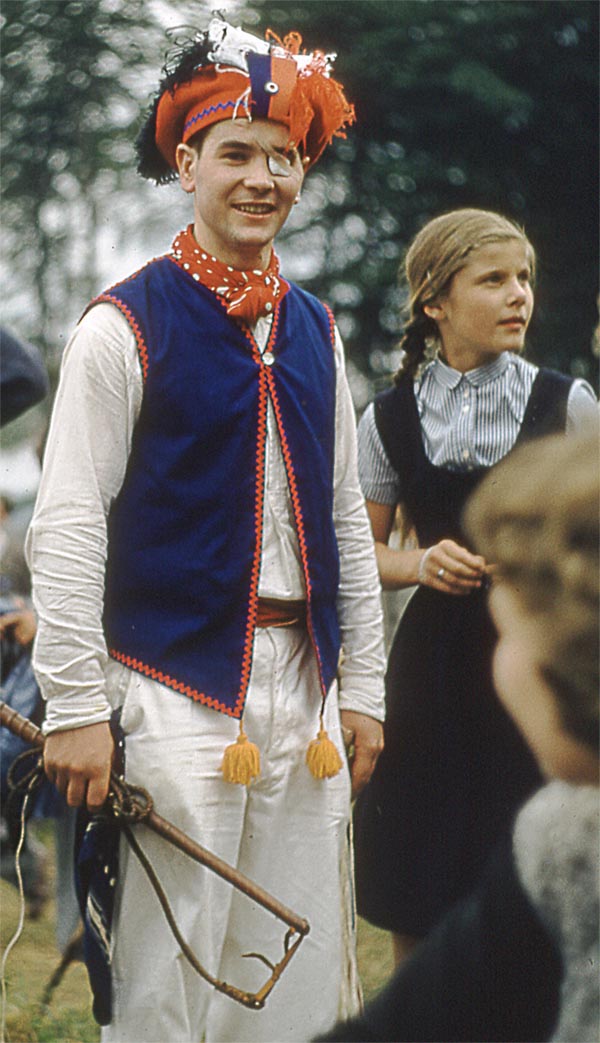
Theo Ochs, one of the Wettläufer in Biedenkopf's 1956 Grenzgang.
(Click for full image showing Baron ____ , a nobleman owner of adjoining lands.)
The
"Wettläufer" or competition-class runners, crack their whips to
get the crowd moving on the long border-checking march.
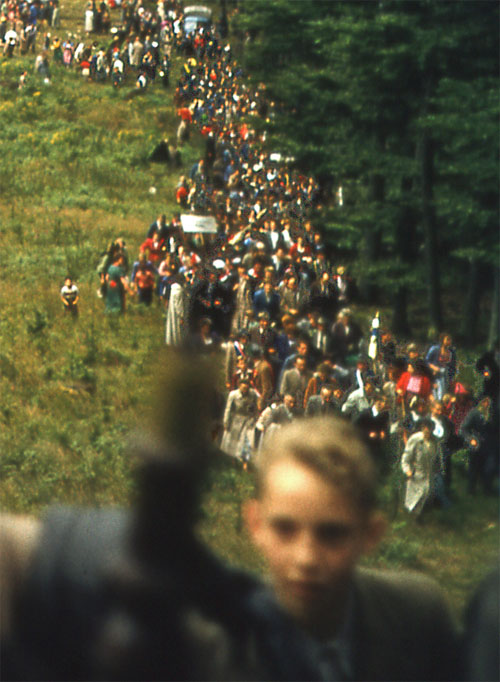
Click for full image.
Break's over, march
the border, check the boundary markers!
We are climbing out of the Thälchens Triesch meadow in 1956, the last
year (I think) that it was used for the first day's Frühstücksplatz.
The well-cared-for woods has several meadows, each big enough to hold
the entire town for a picnic.
After 1956, the town used the Sackpfeife (bagpipes) meadow, further
along this "Day One" part of the border . . .
and bigger too, because attendance is now around 20,000 people (2012),
far more than you'll count if you click for the full image here.
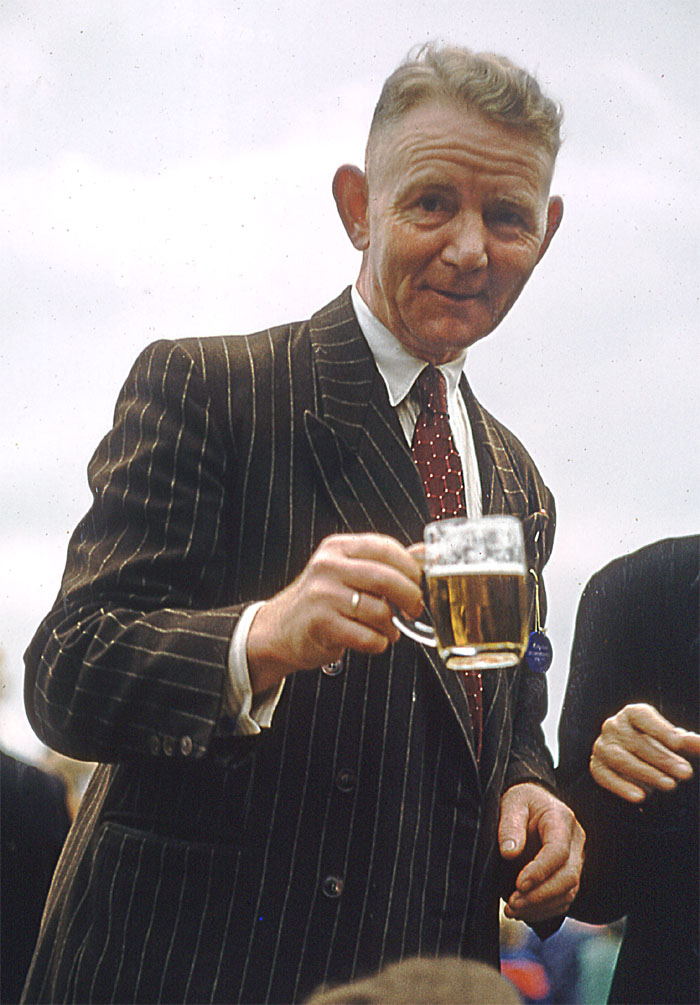
Grenzgang 1956, Frühstucksplatz 1. Tag: Herr Nägel.
In 1956, it was still possible to have cool, rainy days in mid-August
(Germany's "west coast marine" type of climate). People in these
photos are wearing jackets, overcoats, a white sweater.
Julius Caesar fingered the Germanic tribes as a future threat to
The
Empire, but, in 51BC, the behavior of these provincials was
tribal. Clans marched around the woods in circles a lot, checking
their borders. The Roman Empire came and went, the Middle Ages
came and went, but in Biedenkopf, they're still checking the
border. The banner says "the woods is ours" -- everybody's -- and
everybody is there, at six in the morning, on the Marktplatz, on the
trails, in one meadow after another, each one big enough to hold the
entire town and anyone who once lived there.
Insects never seen before
move to lands grown warmer;
populations
explode when
no freeze checks overwintering adults, eggs or spores;
drought-stressed trees weaken,
storms no one ever experienced topple
them. Biedenkopf's families have drawn a border around a commons
treasured for centuries, a commons that finally, after hundreds of
years of vigilance, will be taken from them. The commons will be
taken by others who never held anything close to heart but their own
private wealth and manifest power to push others around -- people clearly
superior to provincials with nothing better to do than march around the woods in circles.
This is Page 3: Old Photos - The 1956 Grenzgang in Biedenkopf, Germany
top of this pagereturn to
bottom of main page & all the links ("Table of Contents")
MAPS page
Liebe Leute! Bitte an jerry-va at speakeasy dot net Korrektur u. Verbesserungen schreiben.
Kann jemand irgend welche Teil übersetzen? Ich könnte es
vollziehen, hätte ich von anderen den Anstoß. Beihilfe kann nur
an bessere, ausgebreitete Redewendung, Ausdrücke, Wortschatz hinführen.
Danke.
Rev 13Aug2016, 27Nov2016,


